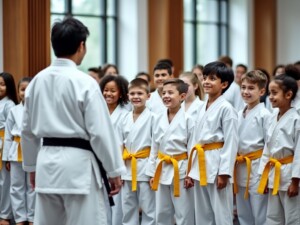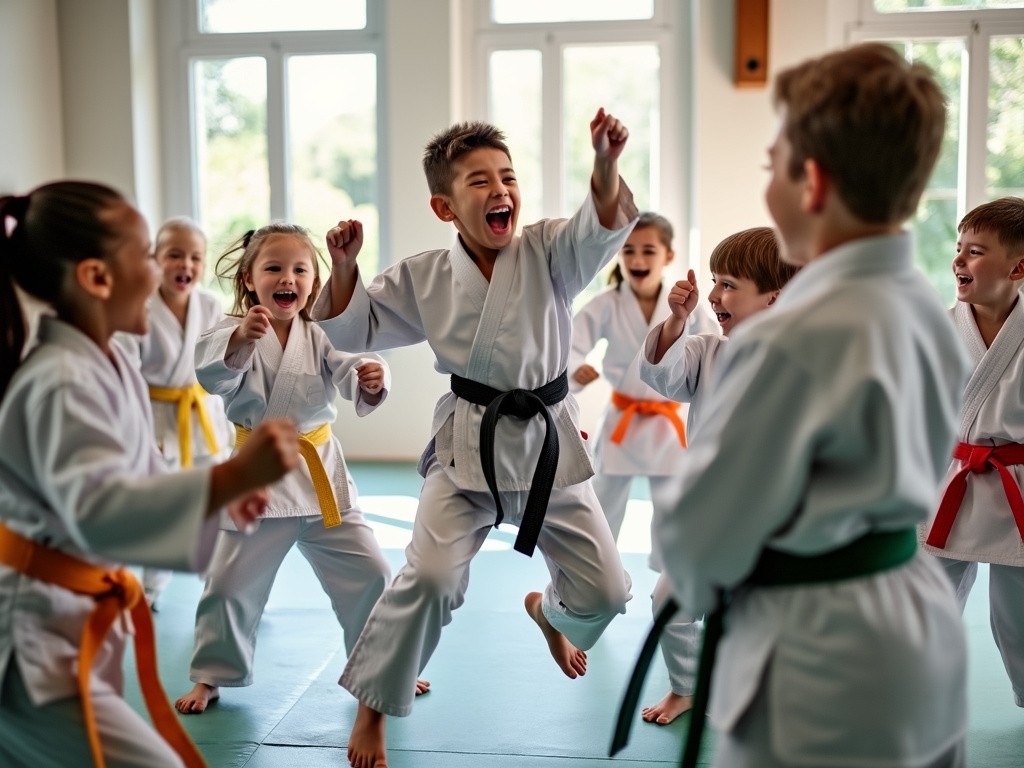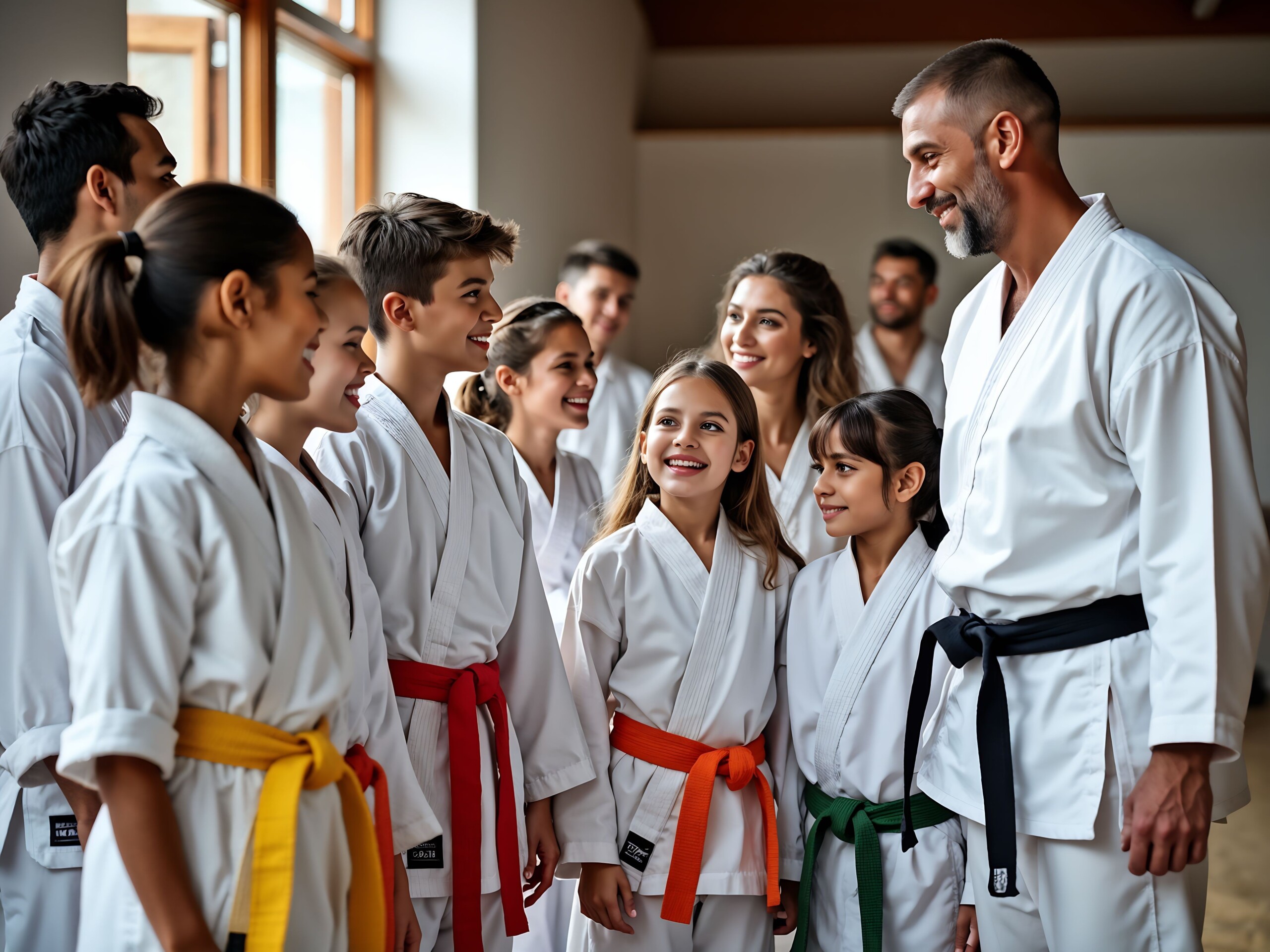The Art of Student Retention: Increase Martial Arts School Retention
Introduction
In the world of martial arts instruction, success isn’t just measured by the number of students who walk through your door—it’s defined by how many choose to stay. Student retention is the cornerstone of a flourishing martial arts school, transforming it from a mere training facility into a vibrant, enduring community.
This article delves into the critical importance of student retention and explores effective strategies to keep your students engaged, motivated, and committed to their martial arts journey. We’ll examine the psychological principles behind student loyalty, discuss practical techniques to enhance the student experience, and provide insights on building a martial arts community that students won’t want to leave.
From celebrating milestones to leveraging technology, from creating personalized experiences to fostering a sense of belonging, we’ll cover a comprehensive range of approaches designed to boost martial arts school retention and cultivate long-term success for your martial arts school.
The Challenge
Picture this: A young student walks into your school for the first time, eyes wide with excitement. They’re nervous but eager to learn. After a few classes, they start feeling more confident and make a few friends. A few months pass, and they’re getting the hang of it. But then life gets in the way. Homework, soccer practice, or just a fading sense of excitement takes over. Slowly, you see them missing classes. Before you know it, they’re gone.
Now, imagine if that student stayed. Imagine if they found every class more exciting than the last, felt part of a close-knit community, and wanted to keep coming back week after week. That kind of student retention doesn’t just happen—it’s built through intentional strategies and a deep understanding of what keeps students engaged.
Why Student Retention Matters
Student retention is the lifeblood of any martial arts school. It’s not just about filling slots or keeping revenue steady; it’s about fostering a thriving community where students can flourish. With competition for people’s time at an all-time high, retaining your students is more important than ever.
It’s crucial to understand that student retention isn’t about locking students into a contract—it’s about locking them into an experience they don’t want to miss. Think of brands like Apple or Nike; their customers aren’t just purchasing products, they’re buying into a lifestyle and an identity. Similarly, your martial arts school should offer more than just classes; it should provide a transformative experience that becomes an integral part of your students’ lives.
To ensure your students stay, focus on creating an engaging, supportive, and consistent experience. The key is to understand what motivates your students and build connections that inspire them to stay. When you do this right, your students won’t just stay—they’ll thrive and become ambassadors for your school.
Overcome the Challenge: The Psychology of Student Retention
Martial arts school retention is fundamentally about engagement, connection, and fulfillment. Psychologically, students are more likely to stay if they feel they’re making progress and if they feel valued. Celebrating milestones helps reinforce the idea that each student is growing. Additionally, a strong sense of belonging—where students feel like they’re part of a supportive community—can increase loyalty and reduce dropouts.
 On an emotional level, students stay when they experience fun, satisfaction, and motivation within their journey. This is where the concept of “flow” comes into play. Developed by psychologist Mihaly Csikszentmihalyi, flow is a state of complete immersion in an activity. When students experience flow during training, they’re more likely to find intrinsic motivation to continue.
On an emotional level, students stay when they experience fun, satisfaction, and motivation within their journey. This is where the concept of “flow” comes into play. Developed by psychologist Mihaly Csikszentmihalyi, flow is a state of complete immersion in an activity. When students experience flow during training, they’re more likely to find intrinsic motivation to continue.
Moreover, the Self-Determination Theory, proposed by psychologists Edward Deci and Richard Ryan, suggests that people are motivated when three basic needs are met: autonomy, competence, and relatedness. In a martial arts context:
- Autonomy can be fostered by allowing students to set personal goals
- Competence is developed through skill progression and overcoming challenges
- Relatedness is nurtured through the school’s community aspect
Martial arts school retention is about tapping into the heart and the mind—it’s ensuring each student feels they’re on a meaningful path that aligns with their personal growth and values.
10 Ways to Increase Student Retention
- Celebrate Milestones: From the first belt promotion to a year of training, make each student’s accomplishments feel like a big deal. Highlight these milestones in class, on social media, and in newsletters to build a sense of pride and progress. Consider creating a “Wall of Fame” in your school to visually represent student achievements.
- Create a Community Environment: Encourage students to interact outside of class. Host social events, or encourage parents to be involved. Students who feel like they have friends in class are much more likely to keep attending. Organize team-building activities, movie nights featuring martial arts films, or community service projects to strengthen bonds between students.
- Offer Personalized Feedback: Personalize feedback and give attention to each student. They should feel seen and supported, whether it’s a word of encouragement during class or a note about how far they’ve come. Implement a system to track individual progress and use this data to provide tailored advice and recognition.
- Regular Check-Ins: If a student starts missing classes, reach out. A quick phone call or message to check in shows you care and can make the difference between a dropout and a student who rededicates themselves. Develop a system to flag attendance issues early so you can intervene proactively.
- Diversify Your Curriculum: Keep things interesting by introducing new techniques, guest instructors, or special workshops. This variety can reignite enthusiasm and prevent boredom. Consider incorporating elements from different martial arts styles to broaden students’ skill sets.
- Implement a Mentorship Program: Pair advanced students with beginners. This not only helps new students feel more connected but also gives experienced students a sense of responsibility and leadership, deepening their commitment to the school.
- Leverage Technology: Use a mobile app or online portal where students can track their progress, access training videos, and connect with other members. This digital engagement can keep students involved even when they’re not physically in the school.
- Create Clear Pathways: Develop and communicate clear progression paths for students. This could include advanced classes, instructor training programs, or competitive teams. Having visible next steps can motivate students to stay engaged long-term.
- Family Involvement: For younger students, involve the whole family. Offer family classes or events where parents can participate. When martial arts become a family activity, it’s more likely to remain a priority.
- Continuous Education for Instructors: Invest in your instructors’ development. The better they are at teaching and connecting with students, the more likely students are to stay. Regular training in both martial arts techniques and teaching methods can significantly impact martial arts school retention.
Pitfalls to Sidestep
While implementing strategies to improve martial arts school retention, it’s equally important to be aware of common mistakes that can undermine your efforts. Here are some key pitfalls to avoid:
- Overemphasis on Contracts: While contracts can provide financial stability, relying too heavily on them can create resentment. Focus on creating value that makes students want to stay, rather than feeling obligated.
- Neglecting Individual Needs: Treating all students the same way ignores their unique goals, learning styles, and challenges. Avoid a one-size-fits-all approach to training and communication.
- Inconsistent Communication: Sporadic or unclear communication can leave students feeling disconnected. Establish regular, meaningful communication channels with your students and their families.
- Ignoring Early Warning Signs: Failing to notice or address signs of disengagement (like decreased attendance or enthusiasm) can lead to unexpected dropouts. Implement systems to track and respond to these indicators promptly.
- Stagnant Curriculum: Failing to evolve your teaching methods or introduce new elements can lead to boredom. Regularly update your curriculum and teaching approaches to keep classes fresh and engaging.
- Overlooking the Social Aspect: Martial arts is not just about individual skill development. Neglecting to foster a sense of community can leave students feeling isolated and more likely to leave.
- Pressure to Advance Too Quickly: Pushing students to progress faster than they’re comfortable with can lead to frustration and burnout. Respect individual learning paces and celebrate small improvements.
- Neglecting Instructor Development: Failing to invest in your instructors’ growth can lead to subpar teaching quality. Continuously train and support your staff to ensure high-quality instruction.
- Overemphasis on Competition: While competitions can be motivating for some, making them the primary focus can alienate students who are more interested in personal growth or self-defense aspects of martial arts.
- Lack of Feedback Mechanisms: Not providing channels for students to give honest feedback about their experience can leave issues unaddressed. Regularly seek and act on student feedback.
- Ignoring Parent/Guardian Involvement: For younger students, failing to engage parents or guardians in the process can lead to a lack of support at home. Keep families informed and involved in their child’s martial arts journey.
- Inadequate Conflict Resolution: Mishandling conflicts between students or between students and staff can create a negative environment. Develop clear protocols for addressing and resolving conflicts respectfully.
By being aware of these pitfalls and actively working to avoid them, you can create a more positive, engaging, and student retention-friendly environment in your martial arts school.
The Battle Plan
To turn the strategies and insights from this article into actionable steps, follow this comprehensive battle plan. This structured approach will help you systematically improve retention in your martial arts school.
Phase 1: Assessment and Planning (Weeks 1-2)
- Conduct a Student Retention Audit
- Review current retention rates and identify trends
- Analyze reasons for past student dropouts
- Survey current students and parents for feedback
- Set Clear Objectives
- Define specific, measurable retention goals (e.g., improve retention by 20% over 6 months)
- Establish key performance indicators (KPIs) to track progress
- Form a Retention Task Force
- Assemble a team of instructors and staff dedicated to improving retention
- Assign roles and responsibilities
Phase 2: Foundation Building (Weeks 3-6)
- Enhance Communication Systems
- Implement a CRM system for tracking student interactions and progress
- Develop a communication calendar for regular check-ins and updates
- Create a Milestone Celebration System
- Design a framework for recognizing and celebrating student achievements
- Prepare materials (certificates, social media templates, etc.) for celebrations
- Develop a Community Engagement Plan
- Plan regular community-building events (e.g., movie nights, workshops)
- Create online spaces for student interaction (e.g., private Facebook group)
Phase 3: Implementation (Weeks 7-18)
- Launch New Initiatives
- Roll out personalized progress tracking for students
- Implement the milestone celebration system
- Begin regular community events
- Enhance Curriculum and Class Experience
- Introduce variety in class structures and content
- Implement a mentorship program pairing advanced and novice students
- Improve Instructor Training
- Conduct workshops on effective teaching methods and student engagement
- Implement a system for regular instructor feedback and development
Phase 4: Monitoring and Optimization (Ongoing)
- Regular Data Analysis
- Review student retention metrics and KPIs monthly
- Conduct quarterly in-depth analyses of retention trends
- Gather and Act on Feedback
- Implement a system for ongoing student and parent feedback
- Hold monthly retention task force meetings to discuss feedback and make adjustments
- Continuous Improvement
- Regularly update and refine retention strategies based on data and feedback
- Stay informed about industry best practices and new retention techniques
Phase 5: Expansion and Innovation (After 6 months)
- Develop Advanced Programs
- Create clear pathways for long-term student progression
- Introduce specialized workshops or advanced classes to keep experienced students engaged
- Leverage Technology
- Implement a mobile app or online portal for progress tracking and community engagement
- Explore virtual training options to supplement in-person classes
- Expand Community Involvement
- Organize community service events or local demonstrations to increase school visibility
- Develop partnerships with local organizations to broaden your school’s impact
Remember, this battle plan is a starting point. Adapt it to fit your school’s unique needs and culture. Consistency and commitment to the process are key to seeing long-term improvements in student retention.


The Takeaway: Building a Community That Lasts
Martial arts school retention isn’t about keeping someone under contract—it’s about keeping them inspired, motivated, and connected. By celebrating achievements, creating community, providing personalized support, and checking in regularly, you can transform your martial arts school from a place where students pass through to a community they never want to leave.
Remember, every interaction is an opportunity to reinforce the value of your school and the martial arts journey. From the moment a new student walks in to the day they achieve their black belt and beyond, your focus should be on creating an experience that’s too valuable to give up.
By implementing these strategies and continuously seeking ways to enhance the student experience, you’re not just running a martial arts school—you’re cultivating a lifelong passion and building a community that can have a profound impact on people’s lives. This is the true art of student retention, and mastering it will ensure your school thrives for years to come.
Checkout the article on the Top 5 Benefits of a AI Chatbots for Martial Arts Schools: Unleashing the Power of AI to learn how to use technology to help retain students.



